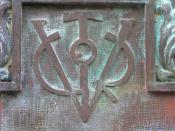17th - 18th July 1936
Throughout Morocco and Spain military garrisons (aided, in places, by the Guardia Civil and the Falange) rose in revolt against the Republican Government.
19th July 1936
The Insurgents (or Nationalists) succeeded in seizing power in Morocco, Navarre, Galicia, Old Castile and Seville, but were thwarted in the key cities of Barcelona and Madrid.
Santiago Casares Quiroga (of the Left Republican Party) resigned from the post of Prime Minister of the Republic. President Manuel Azana asked Diego Martinez Barrio (a member of the Republican Union Party) to form a moderate government that could negotiate with the rebels. When Barrio was unable to form a government that enjoyed any real support he resigned. Professor Jose Giral (of the Republican Party) replaced him and ordered that arms be distributed to the workers.
General Francisco Franco flew from Tenerife to Tetuan to take over command of the Army of Africa.
20th July 1936
Prime Minister Giral appealed to the French Socialist Government (whose Prime Minister was Leon Blum) for arms supplies.
General Francisco Franco sent emissaries to Hitler and Mussolini to ask for military aid and technical assistance.
The nominal leader of the Rising, General Jose Sanjurjo, was killed when the aircraft bringing him from Portugal to Burgos crashed on take-off.
20th July - 27th September 1936
THE SIEGE OF THE ALCAZAR
When it became apparent that the Rising in Madrid had failed, the Nationalist supporters in Toledo, which is 40 miles to the Southwest of the capital, occupied the Military Academy in the Alcazar fortress. The garrison was mainly drawn from the local Guardia Civil and Falange, and was commanded by the Commandant of the Academy, Colonel Jose Moscardo. For two months the defenders held out against the Republican Militia units besieging them; they were finally relieved when...


